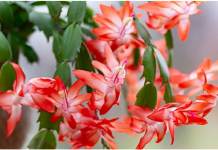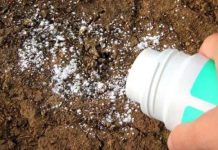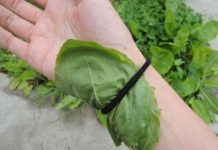With the rising cost of food, many people are considering starting a vegetable garden. This makes sense, as humans have been growing their own food for thousands of years. This food simply comes out of the ground and literally grows on trees. Gardening has many benefits: it can be spiritually and emotionally rewarding, it improves the appearance of your property, and it provides delicious food. Not to be outdone, there is also the potential to save money.
At first glance, this may seem like an obvious win: For example, once you install a tomato garden, you get free tomatoes instead of having to buy them all the time like an idiot. But gardens have hidden costs, and not all crops are equal in terms of profitability. Can you really save money by growing your own food? The answer is yes, but you have to be thoughtful.
Do a little math in your backyard
Once again, your high school algebra teacher wins. This is another time in your life when you will use math.
The starting point is your initial investment. The good news is that gardens are relatively inexpensive. A few years ago, the National Gardening Association conducted a cost study and concluded that most home gardens require an initial investment of about $70. This money is used to buy seeds, soil and/or compost, cages, blankets, water, tools and fencing, if needed. The best news is that you can expect an annual yield of about $600, and seeds are incredibly cheap compared to supermarket grown produce. Tomatoes on the vine cost about $2 a pound, but a packet of seeds costs about $4, and each growing plant is capable of producing between 8 and 30 pounds of tomatoes (though there’s no guarantee you’ll get that much, of course).
These are good numbers, but there are also ongoing costs. Water, for example, will be a regular budget item. You will also have to handle pesticides and use other measures to protect your crops. In addition, there will be breaks, which means some of your crops will die. Frosts may come unexpectedly and destroy other crops, and all the wild living things in the vicinity will watch your garden hungrily. These disrupting factors will make your initial estimates of return on investment ridiculous once they are done with you.
The other consideration is which plants. Some plants are more profitable than others, but there’s no point in planting a high-yielding plant if you won’t eat it. When planning your garden, choose fruits and vegetables that you like and will actually eat, because for your garden to have a significant budgetary impact, you will need to eat a lot of what it produces.
These are the most profitable crops
So you’ll overcome financial anxiety by planting a vegetable garden at home and living off your own crops. What are the best plants to invest in? Here are some of the most profitable crops you can plant.
Tomatoes. As mentioned above, tomatoes are a great investment. They don’t take up a lot of space and can be very easy to grow. Seeds are the cheapest and produce the most economic return, but they take a long time to produce. Buying a seedling or mature plant will cost you $4 to $8, but you’ll get these red beauties much faster, and since you’ll always get at least two pounds of tomatoes, you’ll save about $3 per pound.
Pumpkin. Pumpkins are not as productive as other crops, but they grow a lot. For $3 in seeds, you’ll get up to 3 kilos of squash, for example, versus $1.50 per kilo at the store. Plus, squash freezes well, so if you have a bumper crop, you can stretch those savings throughout the year.
Leaf lettuce. Lettuce is incredibly versatile, making it an ideal crop to use in almost any meal. It also grows very, very well, and requires bi-monthly harvests. You’ll have plenty of lettuce. A packet of seeds usually costs less than $3, so you get what you pay for.
Green beans. For $3, you can get a packet of seeds of this easy-to-grow crop. Otherwise, plants cost about $2 each. One plant usually produces 40 to 60 bean pods, and you can plant the seeds a week or two apart for a consistent yield. Fresh green beans cost $2 to $2.50 per pound at the grocery store, which will save you money.
Herbs. If you’re paying Big Spice for your herbs at the grocery store, you’re paying too much, no matter what they cost. Herb seeds are incredibly cheap (usually less than a dollar a packet), easy to grow and will give you all the mint, basil and parsley you need.
Berries. Freshly picked berries are quite expensive. A pound of blueberries will cost you up to $7, but you can buy three blueberry bushes for about $30 and get about six quarts of berries a year from them. Raspberry bushes cost a little more for the same yield, making them a very economical choice. Best of all, they will continue to produce delicious berries year after year.
okra. Fast-growing and relatively easy to maintain, okra is an excellent choice for a thrift garden, assuming you like to eat okra. You can get a packet of seeds for about $5, which will typically yield about three plants, each of which will produce about a pound of okra once the plants are mature. If fresh okra costs about $5 per kilo at the store, this is a good savings.
Cucumbers. Cucumber seeds cost about $6 a packet, and each plant will produce about 10 cucumbers, or about 2.5 kilograms. Considering that cucumbers cost about 70 cents a kilo at the store, it only takes about three plants to break even, and every additional plant is a return on investment. In addition, you can pickle cucumbers, thus eliminating another item from your shopping list and preserving your crops the old-fashioned way.
Cabbage. At a cost of $5 for a seed packet, kale can be a great addition to your home garden. It grows very quickly and each bunch of kale harvested represents about $1 in savings, so you will recoup your investment fairly quickly. In addition, kale is delicious and very versatile, so you can enjoy it in many ways.
A well-organized home garden can save you a lot of money. Keep in mind that there is a lot of work and care involved, and your time also has a cost. Just because you save money does not mean that the garden will be profitable if it takes up valuable time. That said, it is worth considering having a garden at home as prices continue to rise everywhere.










